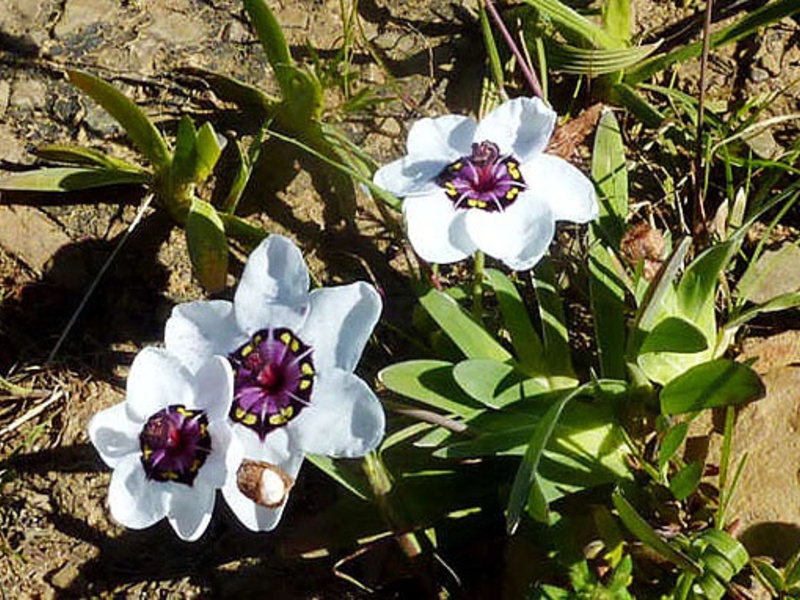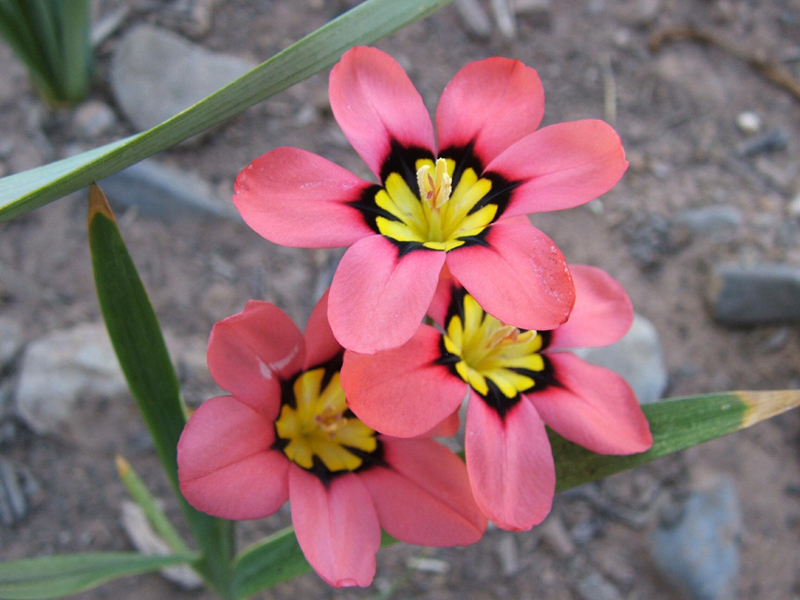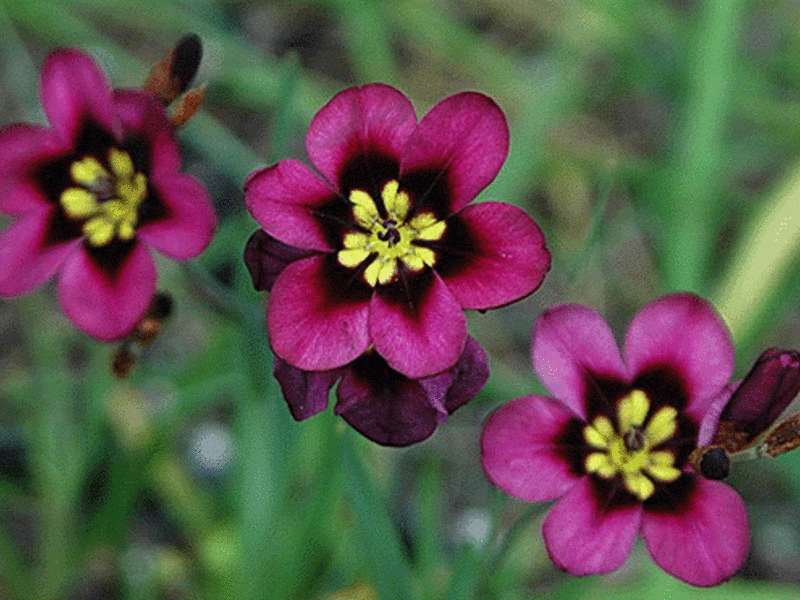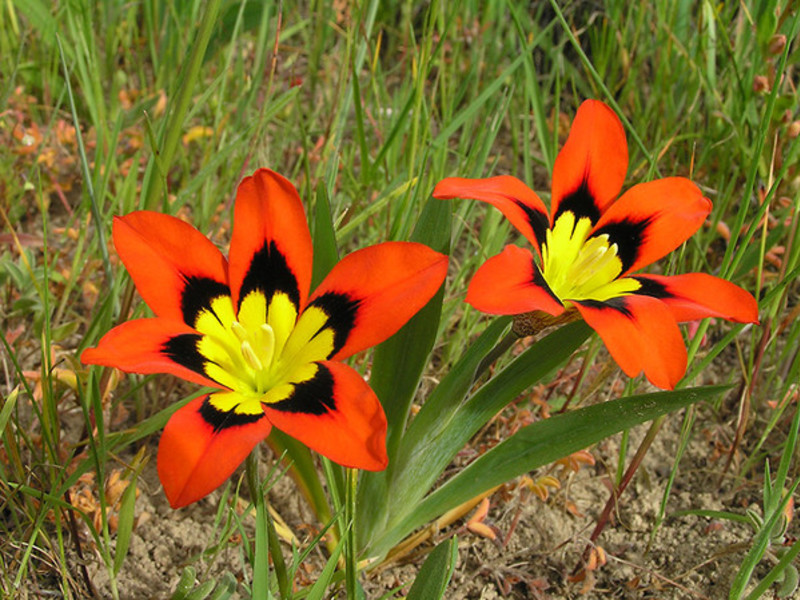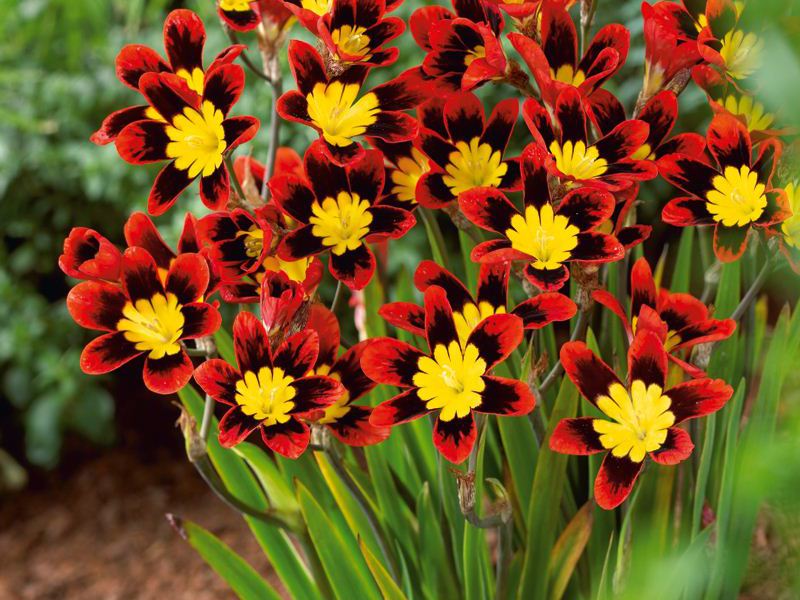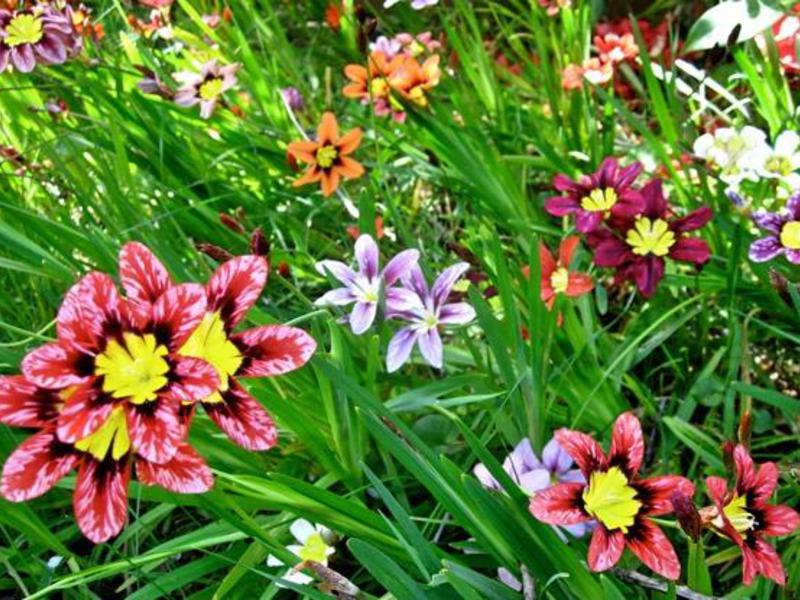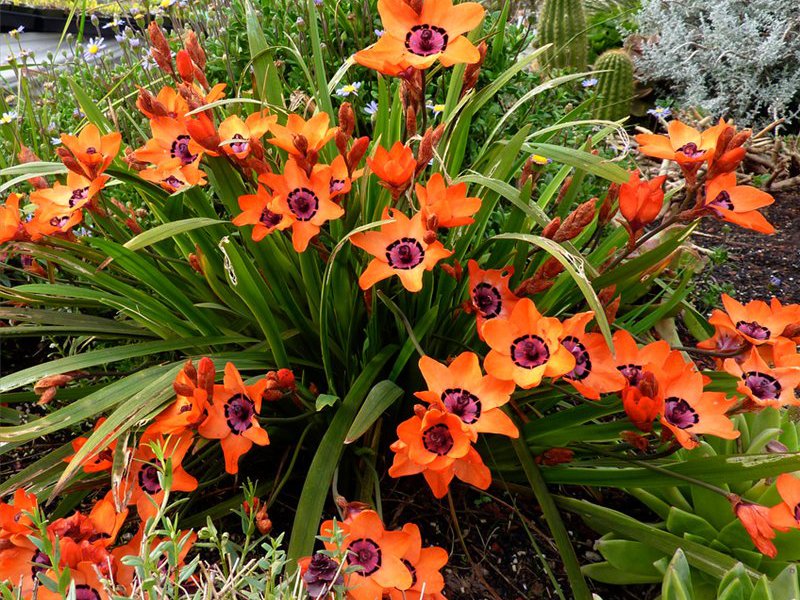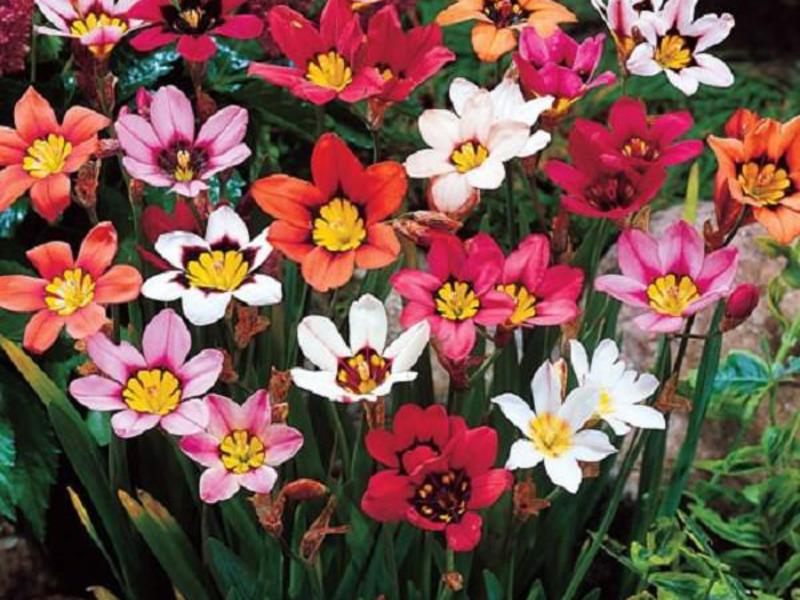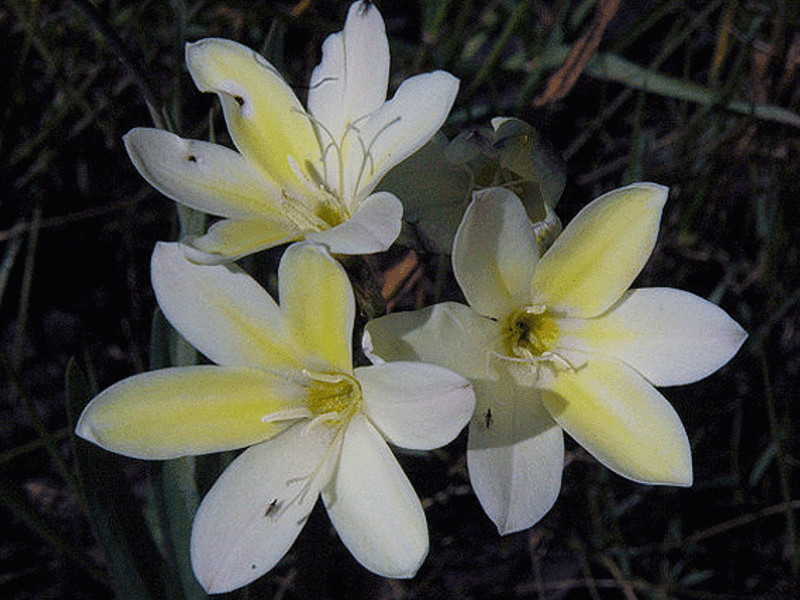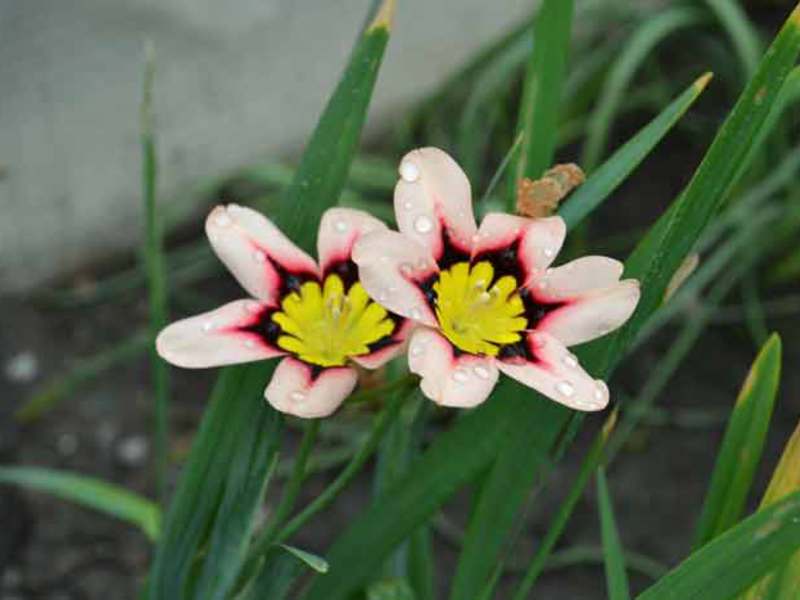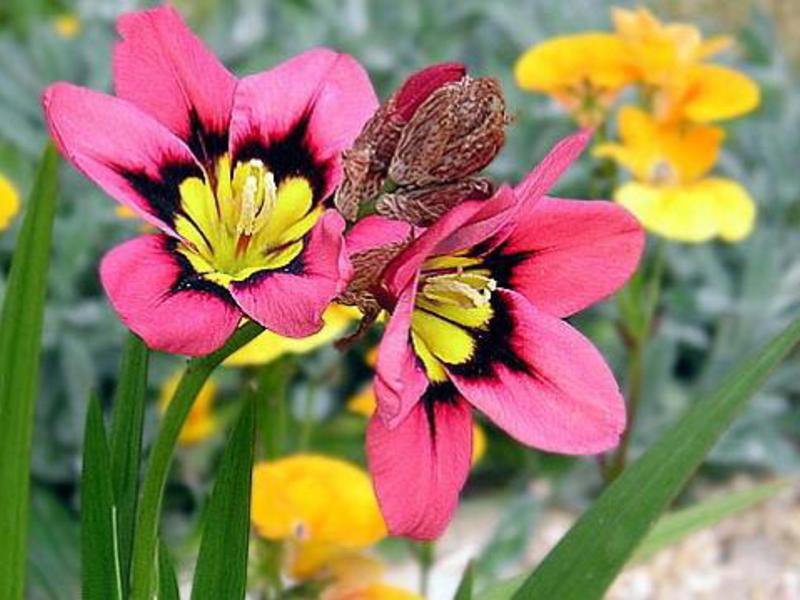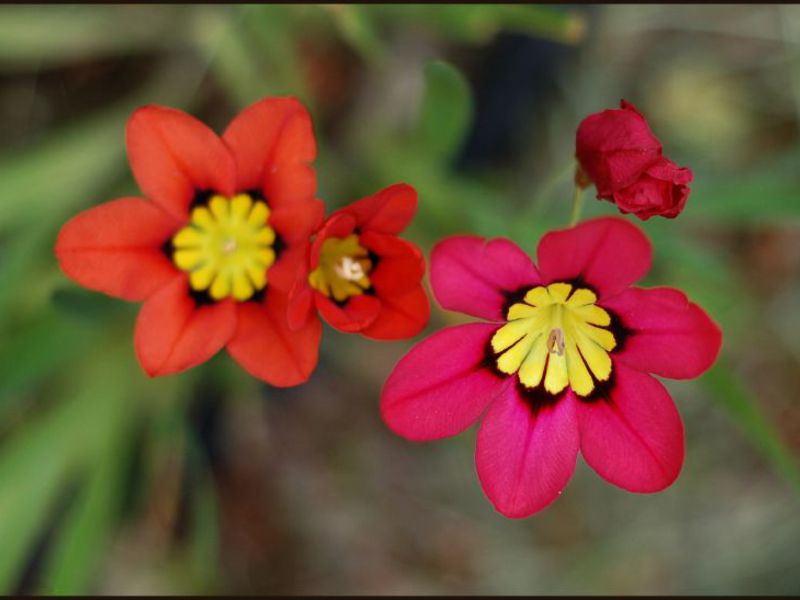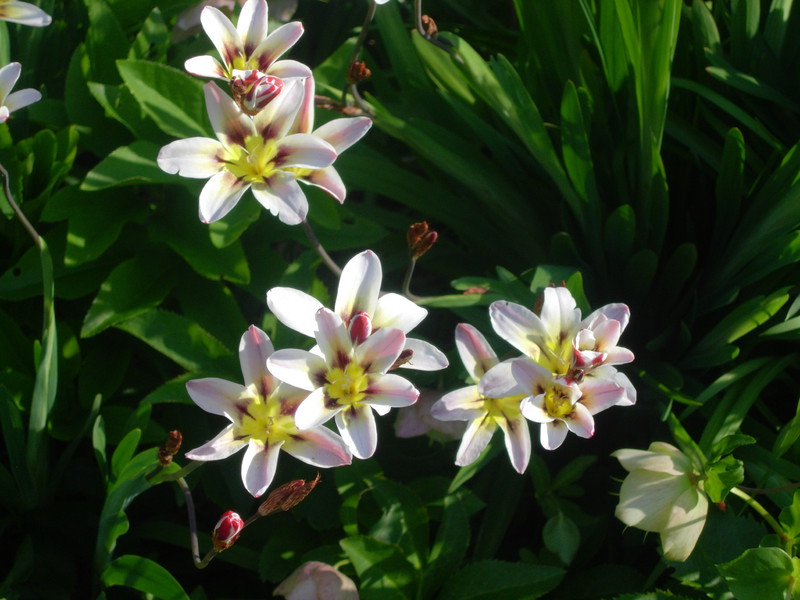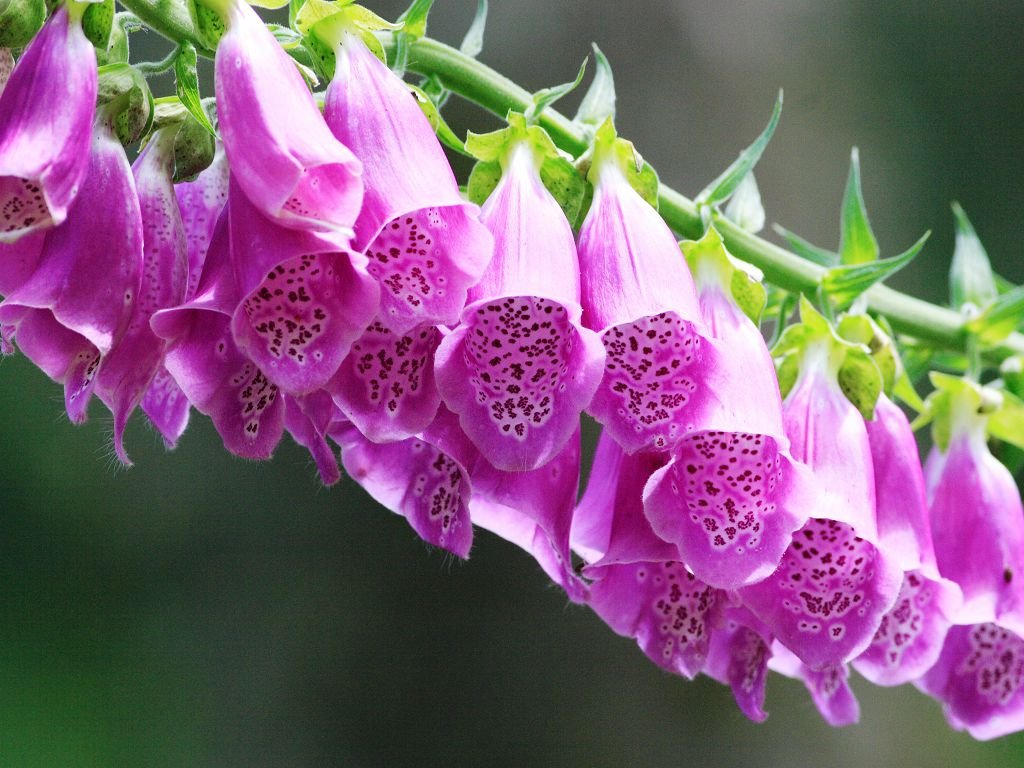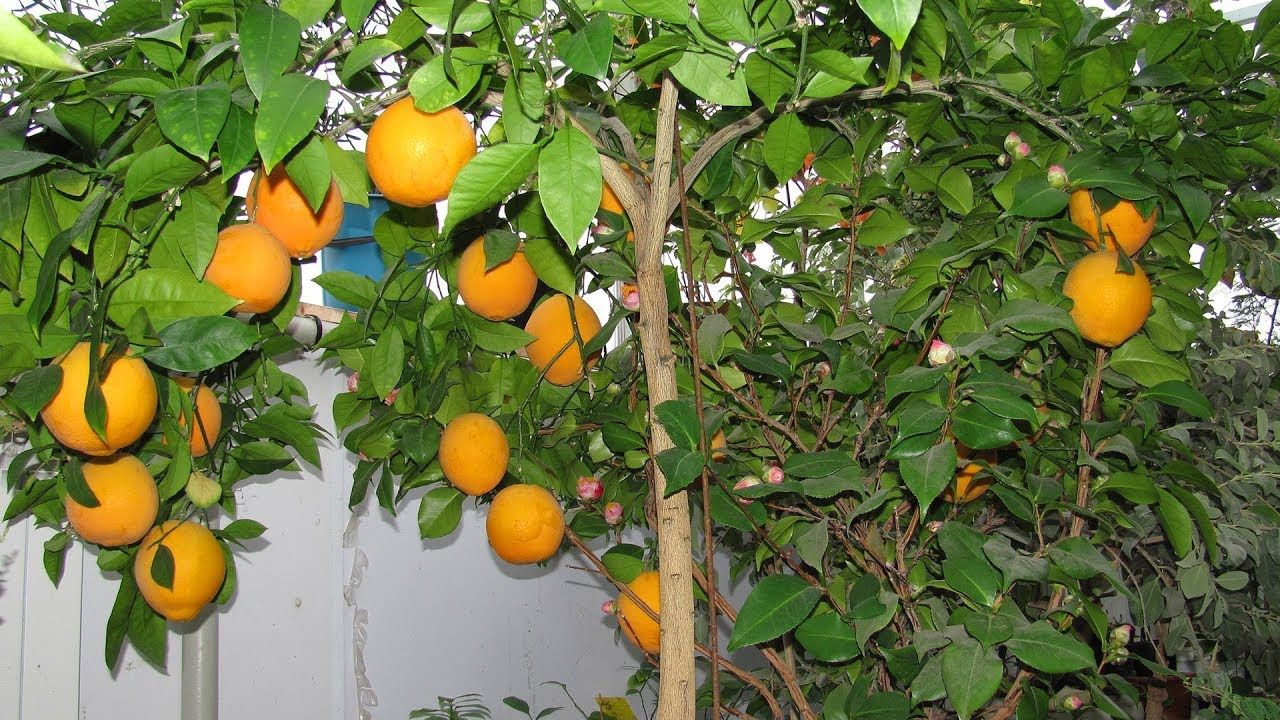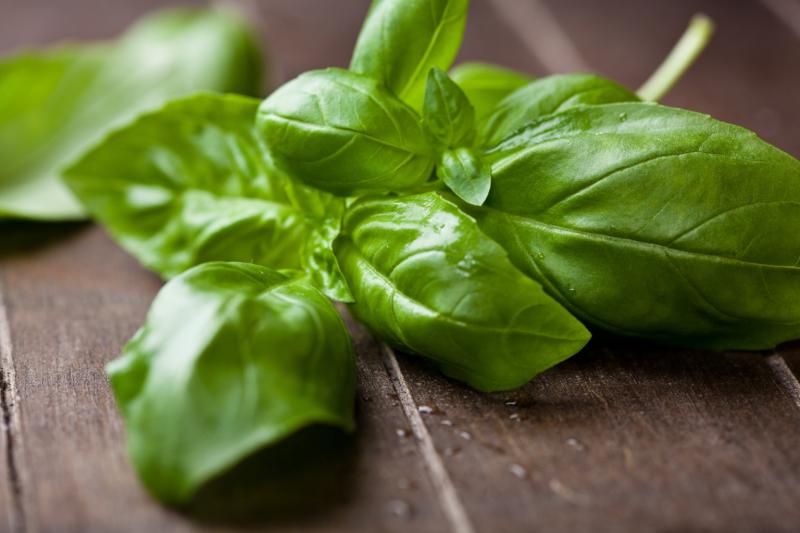You can decorate your garden in early summer with all the colors of the rainbow with the help of the amazing sparaxis flower. This graceful plant, which blends beautifully with other flowers, attracts attention with its colorful and vibrant flowers in different shades. But sparaxis is pretty finicky. This is due to the fact that it does not tolerate frost at all and requires special care. It will be difficult for not too experienced growers to grow it. However, following the guidelines for growing sparaxis will make your flower bed proud.
Description, types and photos of sparaxis
The plant belongs to the bulbous group and belongs to the iris family. Sparaxis growing in natural conditions along the shores of South African reservoirs grows up to one meter. A flower adapted to temperate latitudes in height is no more than 15-60 cm... Openwork multicolored perennial flowers resemble stars. They can reach 6 cm in diameter.
Sparaxis has several dozen varieties. Among them are suitable for growing in open ground:
- Jumbo Star Mix is recognized as the most beautiful sparaxis variety. This floristic miracle has a variety of shades that can be bizarrely combined.
- Sparaxis tricolor is most common in the regions of the Russian Federation. It grows up to 50 cm and has many varieties. The graceful flat flowers of the tricolor are distinguished by bright various shades and a contrasting color in the middle. The xiphoid leaves framing the peduncle and the flower stem of the plant are the same length. Tricolor sparaxis mix is on sale.
- The Bilbifer variety is distinguished by highly branched, erect, strong stems. It is the tallest plant of all sparaxis species. Its yellow and snow-white flowers are located on large peduncles. It is recommended to grow the plant on sandy and calcareous soils.
- Sparaxis Grandiflora is the most common. Its white-yellow, yellow, purple or white flowers beautifully frame juicy belt-like leaves. Some Grandiflora varieties have an amazingly fragrant aroma.
Planting sparaxis
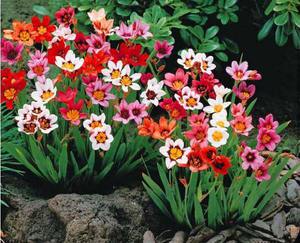 When planting sparaxis in open ground, do not forget that the plant comes from the southern regions. That is why the bulbs of the faded primrose must be dug up, cleaned, dried and stored in containers filled with peat or sawdust. Bulbs should be stored in a well-ventilated area. at a temperature of 8-9C.
When planting sparaxis in open ground, do not forget that the plant comes from the southern regions. That is why the bulbs of the faded primrose must be dug up, cleaned, dried and stored in containers filled with peat or sawdust. Bulbs should be stored in a well-ventilated area. at a temperature of 8-9C.
When planting sparaxis, you must carefully follow the recommendations:
- Corms stored in a cool room are transferred closer to spring to a warmer place with a temperature within 25-27C.
- After the end of the night frosts, the planting material is planted in open ground.
- The landing site should be calm and well lit.
- Planting holes should be 5-6 cm deep.
- The distance between tall plants should be 10x10 cm, and between low plants - 4x4 cm.
- It is recommended to select loamy soil. It should be well fertilized and drained. Excessive moisture in the soil can lead to rotting and death of the plant.
When growing sparaxis in regions with warm winters corms do not need to be dug out... It will be enough to cut off the leaves and peduncles from the plant in the fall, and cover it with peat or fallen leaves.In early spring, immediately after the snow melts, the mulch layer will need to be removed, the soil should be slightly moistened, and a little humus should be scattered over its surface.
Planting sparaxis in the fall is also possible. Only in this case it should be borne in mind that the bulbs of the plant can die even at a temperature of -1C. Therefore, some growers, during autumn planting, make holes for tubers with a depth of 10-12 cm. After that, the soil is covered with mulch.
Propagation of sparaxis by seeds
It is not recommended to sow plant seeds immediately into open ground. It is better to do this in a greenhouse or in a warm room with high humidity.
Sowing is done in August or September... The seedling container should be at least 7 cm deep. The soil mixture with seeds must be constantly ventilated and moistened.
The hatched seedlings are thinned out so that there is at least two centimeters between each plant. Further, the seedlings are grown under the same conditions. Once the seedlings have grown to about 7 cm, they can be transplanted to the desired location in the garden.
Sparaxis grown from seeds will bloom only in the second or third year of growth.
Features of caring for sparaxis in the garden
Sparaxis, who arrived from hot countries, need to create growing conditions for them close to tropical, and certain care.
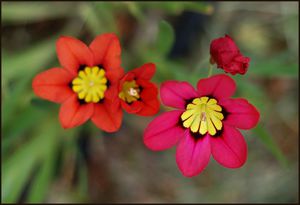 Sparaxis is not afraid of hot rays, and with the slightest shading it can even reduce the intensity of flowering. Therefore, you need to plant it in a sunny place. Planting a flower near walls, trees, bushes and even tall flowers is not recommended.
Sparaxis is not afraid of hot rays, and with the slightest shading it can even reduce the intensity of flowering. Therefore, you need to plant it in a sunny place. Planting a flower near walls, trees, bushes and even tall flowers is not recommended.- Drought is very dangerous for a plant during its active growth. Therefore, the most important maintenance condition is regular watering. If the spring is dry, then it should be abundant and fairly frequent. That the flowers lack moisture can be understood by the small amount of foliage, its yellowing and lack of buds.
- Sparaxis loves high humidity. Therefore, when caring for him several times a week, the plant must be sprayed. It is best to do this early in the morning to prevent burning the leaves of the plant. It is better to take settled water.
- If the plant is grown in a garden in a flower bed, then monthly fertilizing with fertilizers for bulbous plants will be enough for it. It is not recommended to feed sparaxis in autumn.
- Container-grown shrubs require slightly different maintenance. They need to be watered and fed more often. For this, mineral fertilizers are introduced into the water two or three times a month at the rate of 10 grams per 5 liters.
After the plant has faded and the leaves wither, it dug and prepare for wintering... Next year, sparaxis will need to be planted on the same site. The plant has a negative attitude to changes, so a bush planted in another place can bloom only after two years.
Sparaxis in landscape design
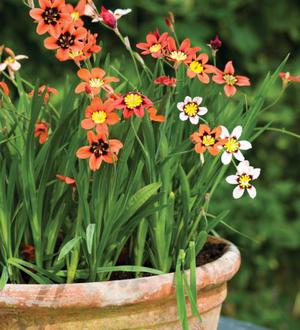 A single bush in a flowerbed will not look. And among other colors it will be completely lost. But they are very effective mass planting of plants... A glade of sparaxis with flowers of different shades is a truly unforgettable sight.
A single bush in a flowerbed will not look. And among other colors it will be completely lost. But they are very effective mass planting of plants... A glade of sparaxis with flowers of different shades is a truly unforgettable sight.
In a rock garden, sparaxis will look great with succulents and conifers.
The plant harmonizes well with other flowers. Low bush can be placed in the foreground of a stepped composition.
In a small area, you can place flowerpots with sparaxis planted there next to the porch or gazebo.
A truly amazing, spectacular and very beautiful tropical plant sparaxis. And although planting and caring for it in the open field is a troublesome business, it is worth a little work, and your garden will sparkle with colorful paints.

